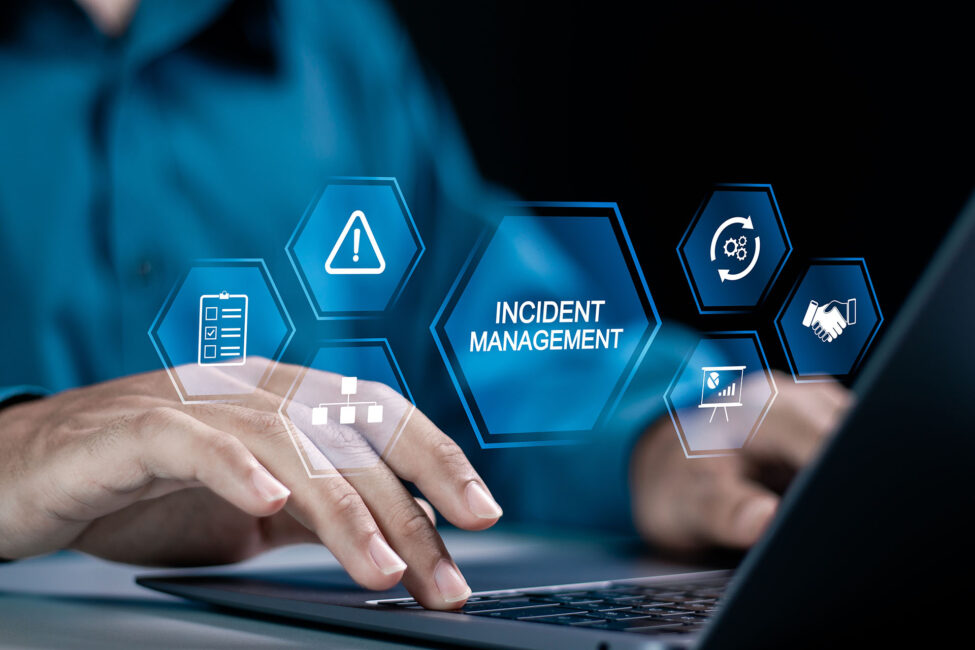Paola Rotondi
Business Development Executive
Kicking off 2025, let’s look at these stats:
- 74% of IT security professionals report their organizations are suffering significant impact from AI-powered threats. (Darktrace)
- 64% of organizations have adopted AI or machine learning in their cybersecurity measures as of 2024. (Gartner)
- 68% of breaches involved a human element in 2024. (Verizon)
- 97% of cybersecurity professionals fear their organizations will face AI-generated security incidents. (Deep Instinct)
- 25% increase in spending on cloud security products and services in 2024. (Gartner)
- 50% of organizations will utilize MDR services for threat monitoring, detection, and response functions in 2025. (Gartner)
- 70% of organizations have outsourced at least part of their security operations to MSSPs in 2024. (MSSP Alert)
It’s clear to see that with AI, the complexity of cyber threats has outpaced traditional security measures.
Organizations across industries are using Managed Detection and Response (MDR) services to fill critical gaps in their cybersecurity defenses. MDR offers a comprehensive solution, providing 24/7 threat monitoring, detection, and rapid response to cyber incidents. But as cybercriminals grow more sophisticated, the role of AI-driven solutions in elevating MDR capabilities has become indispensable.
This blog explores the fundamentals of MDR, its importance for key industries, and how AI-driven tools enhance its impact in three critical areas: regulatory compliance, protection of high-value data, and addressing limited in-house expertise.
WHAT IS MDR?

MDR is a managed cybersecurity service that is proactive. With expert human analysis, real-time monitoring of a network and devices, and using advanced analytics, it detects threats and responds before they cause damage.
Unlike traditional tools that use fixed, unchanging defenses, MDR provides:
- Continuous monitoring and detection of threats across networks, endpoints, and cloud environments.
- Proactive threat hunting to identify vulnerabilities before they are exploited.
- Automated and human-led incident response to mitigate damage quickly.
For industries dealing with complex regulatory requirements, sensitive data, or resource constraints, MDR is a game-changer.
KEY CHALLENGES MDR SOLVES
1. Regulatory Compliance
Industries like healthcare, finance, and energy face stringent regulations (e.g., HIPAA, GDPR, PCI DSS) that mandate the protection of sensitive data and adherence to specific security standards.
- How does AI Simplify Compliance?
AI-driven tools simplify compliance by continuously monitoring systems for regulatory violations and generating automated compliance reports. These tools can identify non-compliant activities in real time, helping organizations address issues before they result in fines or breaches.
For example, in healthcare, AI can detect unauthorized access to patient records, ensuring HIPAA compliance without manual oversight.
In finance, AI can monitor transactions for unusual patterns or activities that may violate PCI DSS requirements, such as large, unexpected transfers or unauthorized access to payment systems. By flagging these anomalies in real time, organizations can address potential compliance issues and prevent fraud before it escalates.
2. Limited In-House Expertise
Many organizations, especially small to medium-sized businesses (SMBs), lack dedicated security teams or the resources necessary for 24/7 monitoring.
- How AI enhances MDR:
AI automates routine cybersecurity tasks like threat detection, alert triage, and incident response, reducing the reliance on human expertise. It also offers actionable insights and recommendations, empowering smaller IT teams to make informed decisions. For organizations with limited budgets, AI-driven MDR solutions deliver enterprise-grade security without the need for in-house SOCs (Security Operations Centers).
THE BENEFITS OF AI-DRIVEN SOLUTIONS
- Faster Threat Detection and Response: AI identifies threats in seconds, enabling immediate containment of attacks.
- Reduced False Positives: AI learns from historical data to differentiate between real threats and benign anomalies, minimizing distractions for security teams.
- Scalability: AI-driven tools can monitor thousands of endpoints simultaneously, making them suitable for organizations of all sizes.
- Cost Efficiency: Automation reduces the operational costs of monitoring and responding to threats, making MDR services more accessible.
SO, WHY MDR WITH AI-DRIVEN CAPABILITIES?
Organizations across various industries benefit from MDR, but those that manage sensitive data, face regulatory scrutiny, or lack internal resources stand to gain the most.
- Healthcare: Protecting patient data and ensuring HIPAA compliance.
- Finance: Safeguarding financial data and preventing fraud while adhering to PCI DSS.
- Energy: Defending critical infrastructure from advanced persistent threats (APTs).
- Retail: Securing customer payment data and online transactions.
- SMBs: Gaining access to enterprise-level cybersecurity without the cost of building an in-house SOC.
As we become more mature in the AI world, cyber threats become more complex. Like the adage “Fight Fire with Fire,” we can use AI for a proactive and adaptive approach to security.
MDR and AI-driven solutions offer the perfect blend of human expertise and technological precision to address today’s unique challenges.
From achieving regulatory compliance to protecting high-value data and compensating for limited resources, AI empowers MDR to deliver unparalleled security and peace of mind.
Want to learn more about this cybersecurity strategy? Contact SmartSource today to learn how our MDR services, powered by cutting-edge AI, can help protect your organization and make your life easier.

